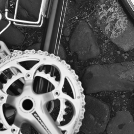Endurance Training

pblakeney
Posts: 27,479
This has probably been covered before.
If so, please give a link to it.
I have booked a trip to the Dolomites 2022 and want to know what training would be best.
I need to lose weight but for training my objective will be to do a long sustained climb followed by a long recovery. Doing that 3 times a day for 6 days in a row.
Should it be long z2, HIT, long sustained FTP, or a combination?
Family duties and work mean that I cannot commit to a regular training program. I have to fit my training in when I can so it it sporadic. I realise that this is detrimental but life balance comes first.
If so, please give a link to it.
I have booked a trip to the Dolomites 2022 and want to know what training would be best.
I need to lose weight but for training my objective will be to do a long sustained climb followed by a long recovery. Doing that 3 times a day for 6 days in a row.
Should it be long z2, HIT, long sustained FTP, or a combination?
Family duties and work mean that I cannot commit to a regular training program. I have to fit my training in when I can so it it sporadic. I realise that this is detrimental but life balance comes first.
The above may be fact, or fiction, I may be serious, I may be jesting.
I am not sure. You have no chance.
I am not sure. You have no chance.
Veronese68 wrote:PB is the most sensible person on here.
0
Comments
-
Does Zwift have similar length and gradient climbs to the ones you anticipate climbing in the Dolomites?
At 100% slope feel, if your turbo can match the Zwift gradients, does your gearing allow you a current power to "plod" along at that pace?
Last night I did the quite nasty 41min "Fun is staying cool" https://whatsonzwift.com/workouts/fun-is-fast-2021/fun-is-staying-cool up Tour Of Fire And Ice, before then freeriding in lowest gear 34/32 from turn 16 to turn 10 at 214W average for another ~22mins. I've not tried to maintain 200+ for prolonged periods since my first jab in April, I'd expect to have dead legs by around 90mins at that pace.
If you improved your FTP by doing workouts such as The Gorby https://whatsonzwift.com/workouts/less-than-60-minutes-to-burn/the-gorby , your power output in easiest gear up long climbs will feel easier and so you should be able to sustain it longer, espeically if you did some long z2 workouts too.
================
2020 Voodoo Marasa
2017 Cube Attain GTC Pro Disc 2016
2016 Voodoo Wazoo0 -
It's difficult to say without knowing how much time or distance your rides are and the type of ascent. If you are doing a climb, descending, and then stopping for a rest (repeat x3) then you will likely have to climb at a low cadence so some similar strength work would be required (assuming it's a steep climb and not on a tiny gear you can spin).
As you can't commit to a training plan I would suggest you try and just get consistency of rides on a weekly basis.Tri Coaching
https://www.h3otriathlon.com0 -
Sorry for the delay. Life getting in the way again.
I use Fulgaz which has the majority of climbs and I have done them using the gearing that I will be taking, just not 3x6. Just not sure that it is the most effective method.N0bodyOfTheGoat said:Does Zwift have similar length and gradient climbs to the ones you anticipate climbing in the Dolomites?
I am not looking for speed, just the ability to go up in a level of comfort and recover.
Apart from lunch the rests are usually when taking in the views at the top.lochindaal said:It's difficult to say without knowing how much time or distance your rides are and the type of ascent. If you are doing a climb, descending, and then stopping for a rest (repeat x3) then you will likely have to climb at a low cadence so some similar strength work would be required (assuming it's a steep climb and not on a tiny gear you can spin).
As you can't commit to a training plan I would suggest you try and just get consistency of rides on a weekly basis.
For perspective the Queen stage is the Foscagno, Eira and Mortirolo with 3500m climbing although it does come the day after doing the Gavia and Stelvio.
Consistency tallies up with my experience of doing the Pyrenees in relative ease after being able to cycle commute to work. Maybe short but regular is the way to go.
Thanks guys.
The above may be fact, or fiction, I may be serious, I may be jesting.
I am not sure. You have no chance.Veronese68 wrote:PB is the most sensible person on here.0

